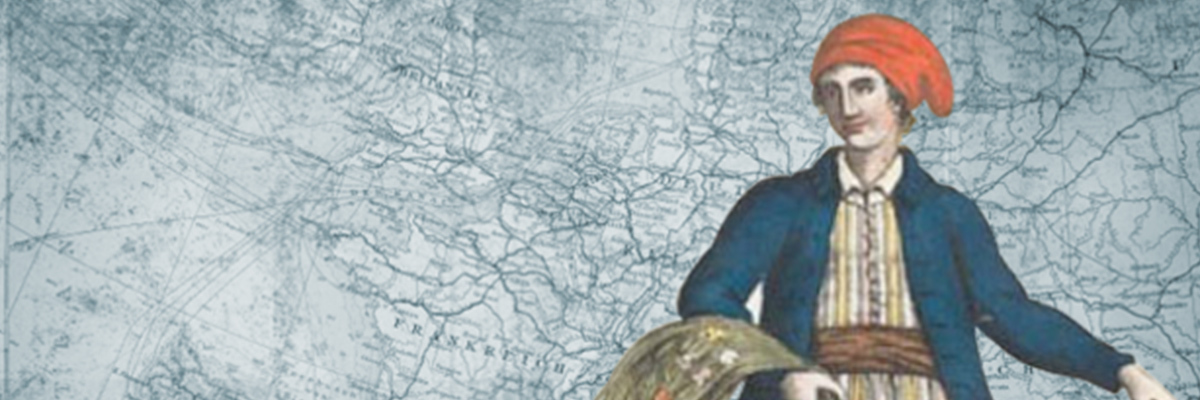STEM Role Models
STEM Role Models: Polar Explorers
In this article in our STEM Role Models series, we’re highlighting individuals that have helped us better understand and explore the arctic regions of earth.
We’re back with a winter take on our STEM Role Models blog series. For this article, we’re highlighting individuals that have helped us better understand and explore the arctic regions of earth.
First, learn about Earth's polar regions, and then read about these extraordinary individuals with your kids or students to help inspire them in their own STEM journeys.
What are the polar regions?
The polar regions are located at the very top and the very bottom of the Earth. These are called the “poles” of the Earth which is where the name “polar” comes from. The northern polar region is known as the Arctic and the southern polar region is called the Antarctic. There is a continent called Antarctica that is mostly within the Antarctic circle.
According to the National Snow & Ice Data Center, archaeologists believe that native people have lived in the Arctic for as much as twenty thousand years. Now nearly four million people live within the Arctic Circle, and indigenous people are a relatively small group. There are no permanent residents on Antarctica (WorldWildlife.Org).
The polar regions are known for being hard to survive in. There are cold winds, freezing temperatures, and limited plants and wildlife. In the polar region, “the winter night can last for months” (WorldWildlife.Org). The native people who have lived in the Arctic Circle learned how to adapt to this hard life, and the people who live there today live in modern cities that also have to adapt.
In this blog post, we’re honoring the individuals who explored the polar regions and helped us to better understand both of the Earth’s poles.

Jeanne Baret (1740 - 1807) | Botanist & Scientist
Jeanne Baret is the first woman to circumnavigate the globe and the first scientist to the sub-Antarctic region. She joined Louis Antoine de Bougainville’s expedition to the Antarctic from 1766 to 1769, and it’s said that she dressed like a man in order to join their trip.

Sir Ernest Henry Shackleton (1874 - 1922) | Antarctic Explorer & Naval Officer
Sir Ernest Henry Shackleton is most often associated with four expeditions to Antarctica. The most well-known expedition was the Endurance Expedition he led. During this expedition, his goal was to land on Antarctica and cross 1,800 miles over the entire continent, while a support ship helped drop off food and supplies.However, his ship became stuck in thick ice. The ice grew so thick that it cracked the boat, and the explorers had to abandon the ship. In an inspiring tale of survival, Shackleton helped his crew survive with limited supplies and just three lifeboats. After landing on a deserted island, Shackleton made a dangerous 920-mile trip across open ocean to reach help.
While the Endurance Expedition was not successful in reaching its goal, it is known as one of the most inspiring survival stories.

Roald Engelbregt Gravning Amundsen (1872 - 1928) | Norwegian Explorer
Roald Amundsen was the first man to reach the South Pole in 1911, and in 1926 he was most likely the first man to reach the North Pole as well.
The North Pole, the center point of the Arctic Circle, is located in the ocean and covered by layers of changing snow and ice. Many people disagree on who reached the North Pole first. However, the first official and scientifically verified journey to the North Pole was by Amundsen. Amundsen traveled to the North Pole on the airship Norge with his United States sponsor Lincoln Ellsworth. The flight of the airship started in Norway, crossed over the Arctic Ocean, and ended in Alaska.

Lois Jones (1935 - 2000) | Geochemist & Antarctic Scientist
In 1969, the US Military lifted the ban on American women working in Antarctica, and Louis Jones led the first all-female Antarctic expedition (Parley.TV). Lois Jones was a geochemist from Ohio State University. As part of her expedition, her all-female team became the first women to reach the South Pole.

Richard Weber (1959) | Polar Explorer
Richard Weber has made more successful treks to the North Pole than anyone in history. To date, he has made more than 60 completed expeditions to the Arctic, North Pole, and South Pole. Some of his accomplishments include making the first and only unsupported return trek to the North Pole and being the first to cross the surface of the Arctic Ocean from Russia to Canada.
Keep learning. Keep exploring.
To explore the world, these STEM models had to make use of STEM skills like geography, mathematics, physics, and more. Plus, they all had a hunger for knowledge, a deep curiosity about the world, and worked for years to make their explorations happen.
If you’re looking for STEM activities and other information to inspire your kids, we encourage you to take a look at some of our other Blocks Rock! resources like:


